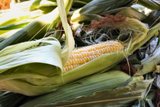Dexway English Magazine: B1 – Edition 8
The food chain
When biologists talk about food chains they are talking about the link or connection between living creatures and their source of food. Everything belongs to food chain, some animals are at the top of the chain and things such as green plants are the bottom.
Biologists can study a food chain to find out the various plants and animals that make that food chain.
The good chain is divided into producers such as plants, they are called producers as they produce their own food using sunlight. Then we have consumers these are animals that eat the plants.
Some animals are Herbivores, which means they only eat plants. They include rabbits, mice and cows.
The food change also has Carnivores and these animals eat only meat. Examples of Carnivores are wolves and lions. There are also Omnivore which eat both meat and plants. Examples of omnivore include humans.
At the top of the food chain are the Predator. A predator includes humans, lions and sharks. The predator cannot be eaten by anything because it has nothing above it.
A bigger chain showing a lot of different animals and plants is called a food web.
Mobile phones
The way we use phones has changed a lot in the past few years. A phone was usually found in our homes or attached to our wall. Once the mobile cell phone became more popular, communication began to change.
Today, almost every modern home has at least one cell phone (and sometimes even children have them!) Because it is easier to contact someone on their mobile phone, we tend to expect immediate responses to our calls. A younger generation may even call a phone number repeatedly thinking that the person on the other line is ignoring them. But patience is not the only thing to change with this new technology. Business life is making use of the mobile technology as well. Many businesses offer free mobile phones to their employees so they can be contacted anywhere and anytime.
Even shopping can be done from a mobile phone now! Sometimes we don’t think about how much we depend on our mobile phones until we lose one or our connectivity is not working well. Usually our phones carry all the contact information for our friends and family, so losing this device and put someone at a great disadvantage. As some phones become cheaper, more and more families will adopt the new mobile technology.
Do you think there are more advantages or disadvantages to this new system of communication?
Corn in the United States
In the early days of the United States, there were many different types of farms. Most farmers would grow a large variety of crops like tomatoes, corn, lettuce, squash, etc. These farms were usually much smaller than typical farms today. The smaller farms were easily taken care of with one family.
Today, farming has changed a lot. Instead of smaller farms with a variety of vegetables and fruits, most farms are very large and only produce one specific type of crop. For example: an older farm may have had 50 acres with 15 different crops on it. Now a farm could be as big as 500 acres, but only grow one specific crop.
In many cases, the crop is corn. Corn has become a very common food for livestock and people. It is even used as a fuel in some cases. Most of the human consumption of corn comes in the scientific creation of corn syrup. This is not a natural product of the corn plant, but scientists are able to extract and create a product that is used in many substitutes for sugar.

Thrifty
Thrifty: to use money and other resources carefully without wasting them.
The use of the word thrifty has stayed a steady usage since 2005, but recently has come back into fashion, according to google trends, which records how many times we use the keyword, this is for two reasons:
1.The 2012 pop song by Macklemore and Ryan Lewis, which showed that even pop stars like to save money.
2.The current economic crisis, being thrifty helps us to save money and makes money go further as well.
In the UK a thrift shop is often known as a charity shop and they sell 100% second hand items, the money that is made from these sales goes to help a particular charity in its day to day activities.
Thrifty helps us to be frugal. Here are a few ways you can be frugal and thrifty at the same time.
- Plan Your Meals – cook for more than one meal, use leftovers.
- Reuse or recycle – is there another use for plastic shampoo bottles? Do you really need to buy bottled water? Is silver foil something that you need in your kitchen?
- Take your lunch to work – save on eating out during the week.
- Hang your clothes outside to dry– this saves energy.
- Turn your thermostat down or use more blankets. Check your draft proofing.
How clean is too clean?
How clean is too clean? And do we really need to be this clean? A recent survey into public toilet use asked the question do you wash your hands after using the toilets and the results might just surprise you.
It turns out that 90% of women wash their hands after using the toilet and only 75% of men. Yet, when another group of men were asked, 96% said they washed their hands after using the toilet!
We know that public toilets hold gems and bacteria in much the same away as our keyboards, mobile phones or mice; these are high traffic areas after all. The risk of bacteria transfer has led some companies to install foot operated flushes and doors which can be opened without touching the door handle. There are few things we can do to reduce gem transfer after using the toilet:
- Use a paper towel to turn the tap on.
- Wash hands using soap.
- Dry hands with paper towel and then use that paper towel to open the toilet door.
- Use alcohol based hand sanitizer.
And this is how you should wash your hands:
- Wet your hands with running water — either warm or cold.
- Apply liquid, bar or powder soap.
- Lather well.
- Rub your hands vigorously for at least 20 seconds.
- Rinse well.
- Dry your hands with a clean or disposable towel or air dryer.
- If possible, use a towel or your elbow to turn off the faucet.
Chocolate and orange slice
Ingredients
- 2 small thin-skinned oranges, approx. 375g total weight (or 1 large)
- 6 eggs
- 1 teaspoon baking powder
- 1/2 teaspoon bicarbonate of soda
- 200 g ground almonds
- 250 g caster sugar
- 50 g cocoa
- orange peel, for decoration
Method
Put the whole orange or oranges in a pan with some cold water, bring to the boil and cook for 2 hours or until soft. Drain, and when cool, cut the oranges in half and remove any big pips. Then pulp everything – pith, peel and all – in a food processor.
Preheat the oven to gas mark 4/180°C Butter and line a 20cm spring form tin.
Add the eggs, baking powder, bicarbonate of soda, almonds, sugar and cocoa to the orange in the food processor. Run the motor until you have a cohesive cake mixture, but slightly knobbly with the flecks of puréed orange.
Pour and scrape into the cake tin and bake for an hour, by which time a cake tester should come out pretty well clean. Check after 45 minutes because you may have to cover with foil to prevent the cake burning before it is cooked through, or indeed it may need a little less than an hour; it all depends on your oven.
Leave the cake to get cool in the tin, on a cooling rack. When the cake is cold you can take it out of the tin. Decorate with strips of orange peel or coarsely grated zest if you so wish, but it is darkly beautiful in its plain, unadorned state.
